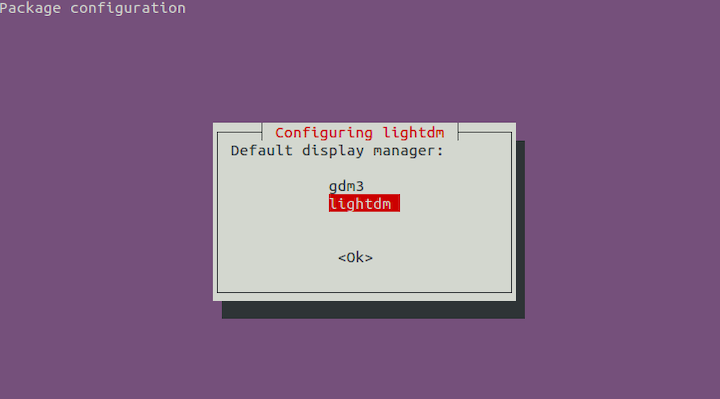How To Change Display Manager on Ubuntu 22.04 LTS

In this tutorial, we will show you how to change Display Manager on Ubuntu 22.04 LTS. Before we dive into the process of changing the display manager, it’s essential to understand what a display manager is and its role in your Ubuntu system. A display manager, in the simplest terms, is a graphical login program. It is the first thing you see when you boot up your system, waiting for you to enter your username and password. But it’s more than just a login screen; it’s also a session manager, responsible for launching and managing user sessions.
There are several types of display managers available, each with its unique features and benefits. Some of the most popular ones include GDM (GNOME Display Manager), LightDM, and SDDM (Simple Desktop Display Manager). GDM, known for its sleek design and robust functionality, is the default display manager in Ubuntu 22.04. However, you might prefer the lightweight and highly customizable nature of LightDM or the modern and intuitive interface of SDDM. The choice ultimately depends on your specific needs and preferences.
This article assumes you have at least basic knowledge of Linux, know how to use the shell, and most importantly, you host your site on your own VPS. The installation is quite simple and assumes you are running in the root account, if not you may need to add ‘sudo‘ to the commands to get root privileges. I will show you the step-by-step change of Display Manager on Ubuntu 22.04 (Jammy Jellyfish). You can follow the same instructions for Ubuntu 22.04 and any other Debian-based distribution like Linux Mint, Elementary OS, Pop!_OS, and more as well.
Prerequisites
- A server running one of the following operating systems: Ubuntu 22.04, 20.04, and any other Debian-based distribution like Linux Mint.
- SSH access to the server (or just open Terminal if you’re on a desktop).
- Basic knowledge of the Linux command-line interface (CLI). This guide assumes you’re comfortable with executing commands in a terminal.
- An active internet connection. You’ll need an internet connection to download the necessary packages and dependencies for Google Fonts.
- A
non-root sudo useror access to theroot user. We recommend acting as a, however, as you can harm your system if you’re not careful when acting as the root.
Change Display Manager on Ubuntu 22.04 LTS Jammy Jellyfish
Step 1. Before diving into the installation process, it’s crucial to ensure your Ubuntu 22.04 system is up-to-date. Keeping your system updated not only ensures you have the latest features and security patches but also helps prevent potential compatibility issues with new software installations:
sudo apt update sudo apt upgrade
Step 2. Enabled the SSH.
First and foremost, ensure that you have enabled the SSH server on your system. This step is a safety measure that guarantees you still have system access over an SSH connection if the new display manager fails to load:
sudo apt install openssh-server
After installing the SSH server, you can check its status with the command:
sudo systemctl status ssh
Step 3. Change Display Manager on Ubuntu 22.04.
Next, you need to check the current display manager. This information is crucial as you will need it in the process of changing the display manager. To do this, run the following command in your terminal:
cat /etc/X11/default-display-manager
This command will display the path to the current display manager.
Now that you’re prepared, let’s dive into the process of changing the display manager. The first step is to install the new display manager. For instance, if you wish to switch to LightDM, you would use the following command:
sudo apt install lightdm
Replace ‘lightdm‘ with ‘sddm‘ or any other display manager you wish to install.
After the installation is complete, it’s time to switch to the new display manager. This process is done using the dpkg-reconfigure command. This command is followed by the name of the current display manager. For example, if GDM is your current display manager, you would type:
sudo dpkg-reconfigure gdm
This command will prompt a menu for you to select the new display manager. Use the arrow keys to navigate and the enter key to make your selection.

Once you’ve made your selection, it’s time to verify the changes. You can do this by running the cat /etc/X11/default-display-manager command again. If the changes were successful, this command should now display the path to the new display manager.
Step 4. Reverting Changes.
In the world of Linux, flexibility is key. If you’re not satisfied with the new display manager or if you encounter any issues, you can easily revert to the previous display manager. To do this, you simply use the sudo dpkg-reconfigure command again and select the previously configured display manager.
Step 5. Troubleshooting Common Issues.
While the process of changing the display manager is generally straightforward, you might encounter some issues along the way. For instance, if the dpkg-reconfigure command fails, there’s an alternative method you can use. You can directly edit the /etc/X11/default-display-manager file and set the new display manager.
To do this, open the file using a text editor such as nano:
sudo nano /etc/X11/default-display-manager
Then, replace the current path with the path to the new display manager and save the changes.
If you encounter any other issues, it’s recommended to search for solutions online or seek help from the Ubuntu community. Remember, the Linux community is vast and always ready to help.
Congratulations! You have successfully changed the display manager. Thanks for using this tutorial to change Display Manager on Ubuntu 22.04 LTS Jammy Jellyfish system. For additional help or useful information, we recommend you check the official Ubuntu website.